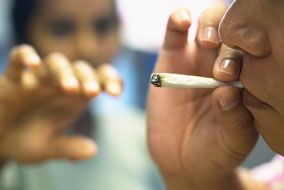Study Pinpoints Substance Use Risk Factors among Teens with Bipolar Disorder
A team of researchers may have identified specific risk factors explaining the association between bipolar disorder and substance abuse among teens.

An association between bipolar disorder (BD) and substance use disorders (SUDs) is well established. However, a team of University of Cincinnati (UC) researchers identified specific risk factors explaining the correlation.
As part of the UC First-Episode Mania Study, investigators recruited 103 bipolar I disorder participants aged 12 to 20 years who were hospitalized for their first bipolar-associated manic episode. To understand their substance use habits, the researchers followed-up with subjects anywhere from 17 to 283 weeks. Demographics and clinical makeup was subsequently compared to adolescents with and without SUDs.
Of the 103 participants, 49 (48%) had a SUD when the study began or developed one during follow-up, the researchers reported in July’s Journal of the American Academy of Child & Adolescent Psychiatry. Among the 71 patients who did not have an SUD when the study began, 17 (24%) developed one during follow-up (median = 40 weeks).
Through univariate analyses, the investigators discovered manic mood episodes, comorbid disruptive behavior disorders, and a later onset of BD as risk factors that drove the association.
“Our analyses revealed several risk factors that were associated with developing a new SUD after the first manic episode in adolescence,” Melissa DelBello, MD, the study’s leader, said in a statement. “Psychosis and [post-traumatic stress disorder] showed the strongest evidence of predicting a new-onset substance use disorder.”
Furthermore, the researchers found adolescents treated with psychostimulants prior to their first manic episode had a decreased likelihood of developing a SUD. These teens had a one-fourth risk of forming an SUD, according to DelBello. However, an attention-deficit/hyperactivity disorder diagnosis was observed to be a stronger factor.
The researchers claimed their findings are preliminary in nature and future studies are needed to further explore this trend. However, they suggested clinicians pay special attention to and educate BD teens and parents, especially those BD adolescents who experienced trauma and psychotic symptoms.